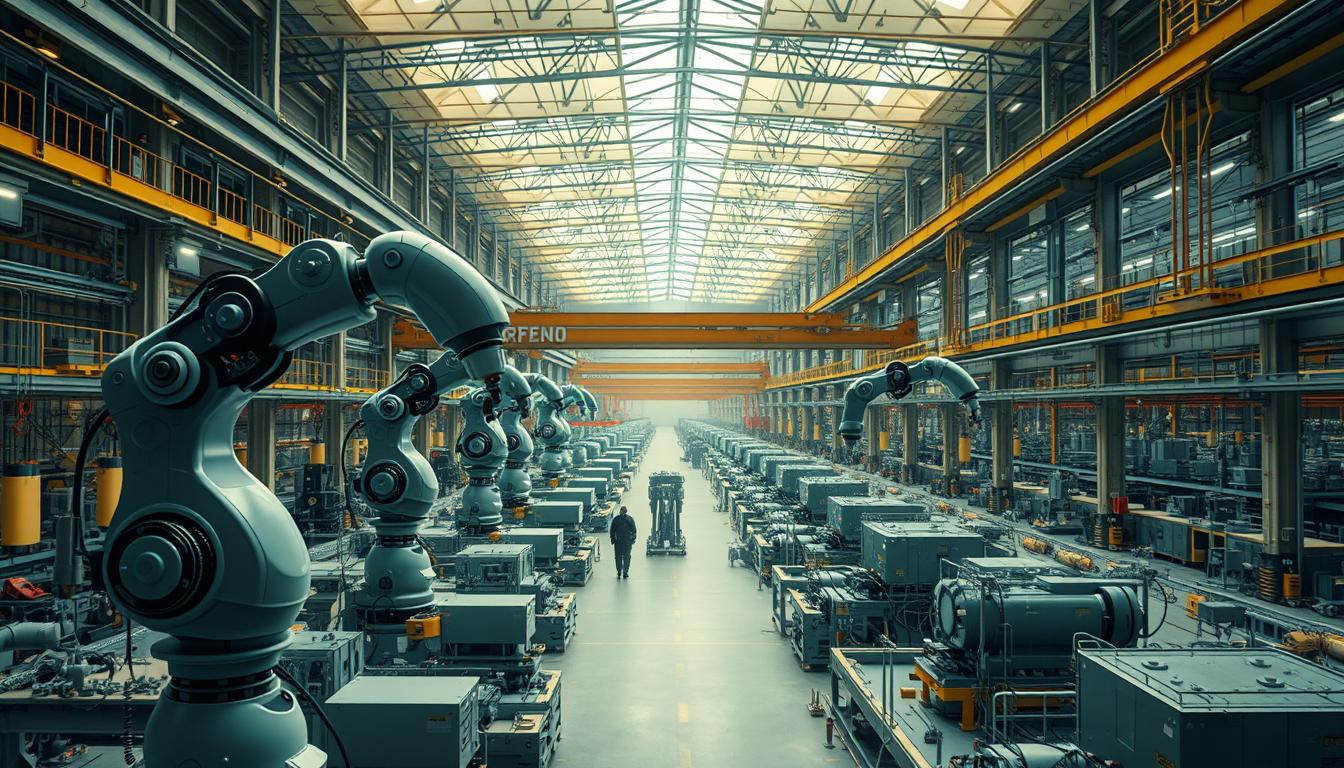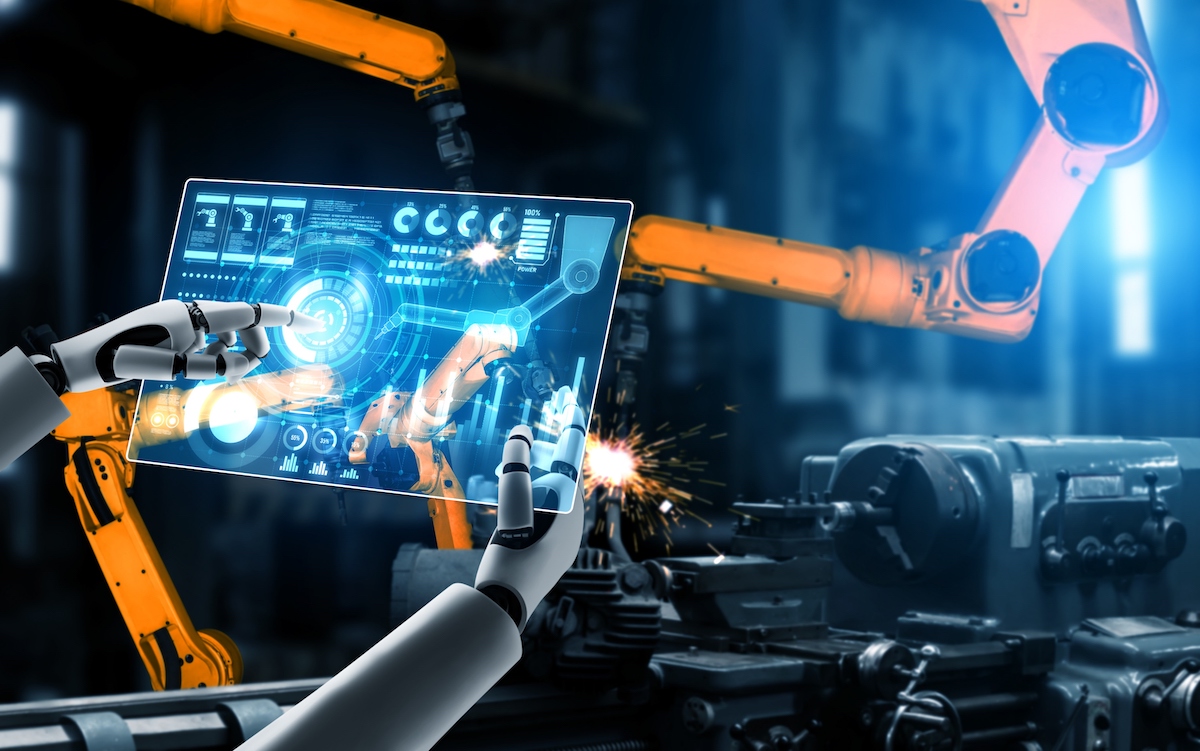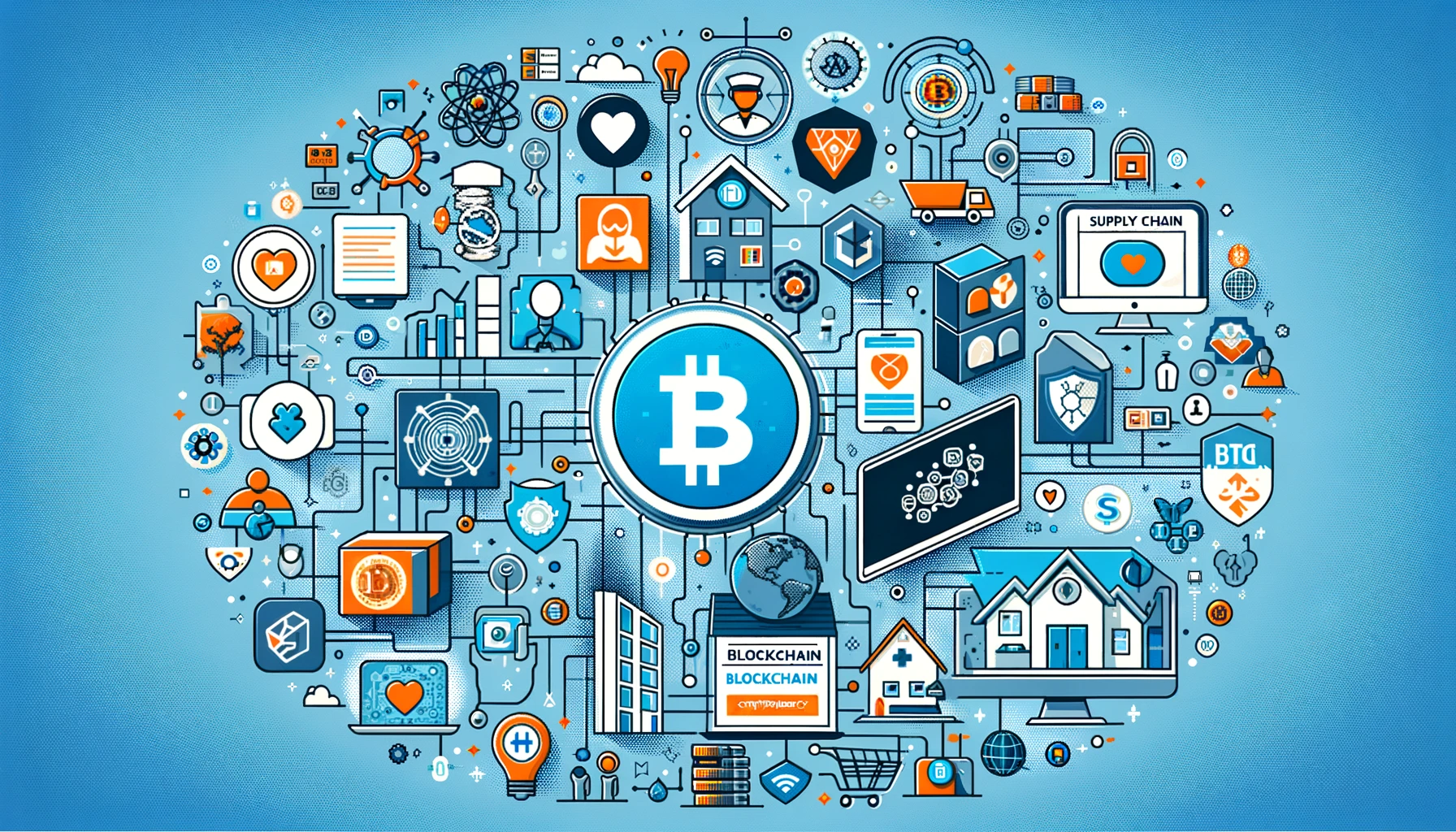
AI in Manufacturing: Driving Industry 4.0 Efficiency & Innovation – A Beginner’s Guide
The world of manufacturing is undergoing a profound transformation, moving beyond traditional assembly lines to embrace a new era of intelligent, interconnected factories. This shift is known as Industry 4.0, and at its very heart lies Artificial Intelligence (AI). Far from science fiction, AI is now a practical, powerful tool revolutionizing how products are made, making factories smarter, faster, and incredibly efficient.
For beginners, the idea of AI in a factory might sound complex, but this article will break it down, showing you how AI is not just a buzzword, but a vital engine driving the future of production.
What Exactly is Industry 4.0?
Before diving into AI, let’s quickly understand Industry 4.0. Imagine a factory where every machine, every product, and every process can "talk" to each other. This is the essence of Industry 4.0, also known as the "Smart Factory." It’s about connecting the physical world of machines with the digital world of data, using technologies like:
- Internet of Things (IoT): Devices and machines with sensors that collect and share data.
- Big Data: Handling massive amounts of information generated by these connected devices.
- Cloud Computing: Storing and accessing data and software over the internet.
- Cyber-Physical Systems: Systems that combine physical and digital components, like smart robots.
The goal? To create highly flexible, efficient, and responsive manufacturing processes. And this is where AI steps in as the "brain" that makes sense of all this information and enables intelligent actions.
Understanding AI (Simply Put) for Manufacturing
So, what is Artificial Intelligence in this context? Think of AI as a computer system designed to learn from data, understand patterns, and make decisions or predictions – much like a human brain, but often at a much faster scale and without getting tired!
In manufacturing, AI isn’t about creating robots with human emotions. It’s about:
- Machine Learning (ML): Teaching computers to learn from data without being explicitly programmed for every single scenario. For example, showing an AI system thousands of pictures of good and faulty products until it can identify defects on its own.
- Deep Learning (DL): A more advanced form of ML that uses "neural networks" (inspired by the human brain) to process complex patterns, often used in areas like image recognition for quality control.
- Predictive Analytics: Using historical data and AI algorithms to forecast future events, such as when a machine might break down.
Essentially, AI helps manufacturers move from reactive problem-solving (fixing things after they break) to proactive optimization (preventing problems before they happen and constantly improving operations).
Why AI is a Game-Changer for Manufacturing
Traditional manufacturing relies on human decision-making, fixed automation, and historical data. AI elevates this by introducing:
- Data-Driven Insights: AI can analyze vast amounts of data from factory floors in real-time, uncovering insights that humans might miss.
- Automation with Intelligence: Beyond simple repetitive tasks, AI allows machines to adapt, learn, and make intelligent choices.
- Predictive Capabilities: Moving from guesswork to accurate forecasts for maintenance, demand, and quality.
- Continuous Improvement: AI systems can constantly learn and refine processes, leading to ongoing efficiency gains.
This means factories can become more agile, responsive, and significantly more efficient, saving money and improving product quality.
Key Applications of AI in Manufacturing: Driving Efficiency
Let’s explore the practical ways AI is transforming factories right now:
1. Predictive Maintenance: Fixing Before Breaking
One of the most significant benefits of AI. Traditionally, machines are maintained on a fixed schedule (time-based) or after they break down (reactive). Both methods lead to downtime and lost production.
- How AI Helps: AI systems analyze data from machine sensors (temperature, vibration, sound, pressure, etc.). By learning the "normal" patterns and identifying subtle deviations, AI can predict when a machine is likely to fail.
- Efficiency Impact:
- Reduced Downtime: Maintenance can be scheduled exactly when needed, minimizing unexpected stops.
- Lower Costs: Prevents costly catastrophic failures and unnecessary routine maintenance.
- Extended Equipment Lifespan: Proactive care keeps machinery running optimally for longer.
2. Quality Control & Inspection: Spotting Imperfections
Ensuring product quality is paramount. Manual inspection is slow, prone to human error, and expensive.
- How AI Helps:
- Computer Vision: AI-powered cameras and image recognition software can scan products at high speed, identifying even tiny defects (scratches, misalignments, color variations) with incredible accuracy.
- Automated Defect Detection: AI learns from examples of good and bad products, allowing it to instantly flag anomalies.
- Efficiency Impact:
- Higher Quality Products: Catches defects early, preventing faulty products from reaching customers.
- Faster Inspection: Speeds up the quality control process significantly.
- Reduced Waste: Less scrap material from defective items.
- Lower Labor Costs: Frees human inspectors for more complex tasks.
3. Enhanced Robotics & Automation: Smarter Machines
While robots have been in factories for decades, AI makes them smarter, more adaptable, and safer to work alongside.
- How AI Helps:
- Collaborative Robots (Cobots): AI allows robots to work safely next to humans, understanding human movements and adapting their own.
- Adaptive Robotics: Robots can learn new tasks, adjust to variations in materials, and handle more complex assembly operations without needing constant reprogramming.
- Optimized Path Planning: AI can calculate the most efficient movements for robots, speeding up tasks.
- Efficiency Impact:
- Increased Flexibility: Robots can handle a wider range of tasks and products.
- Improved Safety: Cobots reduce risks in shared workspaces.
- Higher Throughput: Faster and more precise execution of tasks.
4. Supply Chain Optimization: From Raw Material to Customer
Managing the flow of materials, information, and finances is incredibly complex. AI can bring order and foresight.
- How AI Helps:
- Demand Forecasting: AI analyzes historical sales data, economic trends, and even social media sentiment to predict future product demand with higher accuracy.
- Inventory Management: Optimizes stock levels, reducing holding costs and preventing shortages.
- Logistics Optimization: Plans the most efficient shipping routes and schedules.
- Risk Management: Identifies potential disruptions (e.g., supplier issues, natural disasters) in the supply chain.
- Efficiency Impact:
- Reduced Costs: Less waste from overstocking or lost sales from understocking.
- Faster Delivery: Optimized logistics ensure products get where they need to be quickly.
- Increased Resilience: Better prepared for unexpected disruptions.
5. Generative Design & R&D: Innovating Products Faster
AI isn’t just for the factory floor; it’s also revolutionizing how products are designed.
- How AI Helps:
- Generative Design: Engineers input desired parameters (materials, weight, strength, manufacturing method), and AI algorithms automatically generate thousands of design options.
- Material Discovery: AI can sift through vast databases of materials to identify new compounds with specific properties.
- Simulation & Testing: AI can quickly simulate how a product will perform under various conditions, reducing the need for expensive physical prototypes.
- Efficiency Impact:
- Faster Product Development: Dramatically cuts down design time.
- Optimized Designs: Creates lighter, stronger, and more efficient products.
- Reduced Prototyping Costs: Less need for physical testing.
6. Energy Management: Greener and Leaner Operations
Energy consumption is a major cost and environmental concern for manufacturers.
- How AI Helps: AI systems monitor energy usage patterns across the factory, identifying areas of waste or inefficiency. They can then optimize machine schedules, lighting, and HVAC systems to reduce energy consumption.
- Efficiency Impact:
- Significant Cost Savings: Lower electricity bills.
- Reduced Carbon Footprint: Contributes to environmental sustainability.
7. Worker Safety and Training: A Smarter, Safer Workforce
AI can also play a crucial role in protecting human workers and enhancing their skills.
- How AI Helps:
- Safety Monitoring: AI-powered cameras can detect unsafe behaviors or hazards (e.g., a worker not wearing safety gear, a machine operating outside safe parameters) and issue alerts.
- Ergonomic Optimization: AI can analyze worker movements to identify and suggest improvements for reducing strain and injury.
- Personalized Training: AI can identify skill gaps and recommend tailored training modules for employees.
- Efficiency Impact:
- Fewer Accidents: Creates a safer working environment.
- Improved Morale: Workers feel more secure and supported.
- Skilled Workforce: Ensures employees have the up-to-date knowledge needed for smart factories.
The Overarching Benefits of AI in Manufacturing
By implementing these applications, manufacturers can realize a wide array of benefits:
- Increased Efficiency & Productivity: Doing more with less, faster.
- Significant Cost Reduction: Lower energy bills, less waste, reduced maintenance, optimized inventory.
- Enhanced Quality & Customer Satisfaction: Fewer defects, better products, faster delivery.
- Greater Agility & Responsiveness: Adapting quickly to market changes and customer demands.
- Improved Sustainability: Reduced waste, lower energy consumption, more efficient resource use.
- Safer Work Environments: Proactive hazard detection and ergonomic improvements.
- Competitive Advantage: Staying ahead in a rapidly evolving global market.
Challenges and Considerations for AI Adoption
While the benefits are clear, adopting AI isn’t without its hurdles:
- Data Quality and Availability: AI thrives on data, but collecting, cleaning, and structuring high-quality data can be a significant challenge for many manufacturers.
- Initial Investment: Implementing AI solutions requires upfront costs for software, hardware, and integration.
- Skill Gap: A shortage of professionals with AI expertise (data scientists, AI engineers) in manufacturing.
- Cybersecurity Risks: More connected systems mean more potential entry points for cyber threats.
- Integration Complexity: Integrating new AI systems with existing legacy infrastructure can be tricky.
- Ethical Considerations: Concerns about job displacement (though often AI creates new, higher-skilled jobs) and data privacy.
Overcoming these challenges requires strategic planning, investment in training, and a clear vision for digital transformation.
The Future is Intelligent: Manufacturing with AI
The journey of AI in manufacturing is only just beginning. As the technology matures and becomes more accessible, we can expect:
- Fully Autonomous Factories: Where AI orchestrates entire production processes with minimal human intervention.
- Hyper-Personalization: Manufacturing products tailored to individual customer needs at mass production scale.
- Human-AI Collaboration: Humans and AI working seamlessly together, with AI handling repetitive or dangerous tasks, and humans focusing on creativity, problem-solving, and strategic decision-making.
- Self-Healing Systems: Machines that can not only predict failures but also automatically initiate repairs or reconfigure themselves.
Conclusion: Embracing the Intelligent Factory
AI is no longer an optional upgrade for manufacturers; it’s a fundamental pillar of Industry 4.0 and a necessity for staying competitive in the modern world. By understanding its core principles and applications, even beginners can grasp the immense potential of AI to drive efficiency, foster innovation, and create a smarter, more sustainable future for manufacturing. The factories of tomorrow will be intelligent, and AI is the brain that makes it all possible.



Post Comment